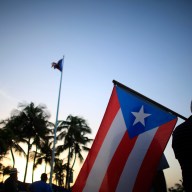If the North American economy is tanking, you wouldn’t know it by looking at the industry spring training has become.
Dunedin Blue Jays special consultant Ken Carson admits it’s tougher to sell in-stadium advertising this year, but says tourists haven’t stopped ordering tickets.
In Fort Myers, Fla., 220 kilometres down the coast, local officials have agreed to spend at least $50 million US on a new stadium to keep the Boston Red Sox in town, and are prepared to spend a few million more to also lure the Baltimore Orioles.
And this season, the Cleveland Indians moved their camp from Florida to Goodyear, Ariz., drawn by a training facility built with public money.
Even in a weak economy, money, both private and public, flows for spring training, though some experts question whether it’s a wise investment for cities.
“You’re kind of stupid to invest your money in spring training, when all the bang is going to come in six weeks,” says Phil Porter, a professor at the University of South Florida who studies the economics of sport. “You’re just not going to get a community that expands and grows.”
Despite that kind of skepticism, the Florida government says spring training contributes $500 million to the state’s economy every year, and provides work, albeit temporary, to thousands of residents. Carson, who spent 23 years as the Jays’ director of spring training operations, says training camp creates short-term work for roughly 200 people, and estimates tourists spend at least $7 million locally each year, mostly at hotels and restaurants.
“Eighty per cent of (spectators) are from out of town,” he said. “They’ve got to have someplace to stay and they’ve got to have someplace to eat.”
He found out first-hand how much cities value spring training in 1991, when the Jays briefly explored the idea of jumping to the Cactus League in Arizona. The city of Dunedin responded to the news by spending $14 million on a new Jays facility. Since then the numbers have continued to climb.
Jeff Mielke of the Lee County Sports Authority denies reports the county spent $80 million to keep the Red Sox from leaving Fort Myers, but says estimates for a new publicly financed stadium range between $50 million and $60 million. And Goodyear, Ariz., invested $76 million in the baseball complex that lured the Indians west.
Still, not everyone thinks spring training sites are worth that much public money.
Last year, residents of Sarasota, Fla., reacted when they learned the Baltimore Orioles, nearing the end of their lease in Fort Lauderdale, wanted Sarasota to build them a new $65-million facility. Residents demanded a referendum, but the Orioles settled the issue when they rejected the offer of $30 million in upgrades to an existing stadium in Sarasota. They’re still in Fort Lauderdale, but for how long is an open question. Fort Myers is in hot pursuit of the Orioles.
Porter questions whether a six-week training camp can generate enough revenue to justify public expenditures that large. Tourists spend plenty of money, but Porter points out a lot of the cash goes to the teams — who take their profits with them when they leave town at the end of March.
Still, Mielke and Carson maintain spring training facilities are profitable for cities that invest wisely. The Jays’ licensing agreement with Dunedin pays the city between $225,000 and $275,000 every year, while Fort Myers earns $300,00 annually on its lease with the Red Sox.















